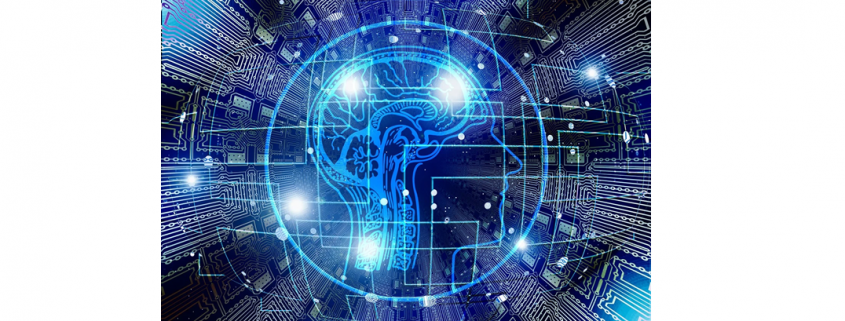Capturing COVID: How and Why Data Mining is Being Used to Combat Coronavirus
Image Source: Pixabay (https://pixabay.com/illustrations/artificial-intelligence-brain-think-3382507/)
In just a few short months, the coronavirus pandemic has infiltrated pretty much every aspect of daily life. It has virtually decimated the global economy. It has taken our children out of their schools. It’s wrought havoc on an already overburdened healthcare system.
That, however, is changing. And technology is the reason why. Data mining is nothing new, of course, and its use in the field of healthcare is well-established.
But the importance of data mining has never been more apparent than right now, as scientists, researchers, and healthcare providers race to develop a clear and effective profile of this unseen adversary.
What is Data Mining and Why Does It Matter?
Put simply, data mining uses automated technology to scour other technologies for relevant information collected from the tech’s users. Data scientists then analyze these enormous — and we do mean enormous — quantities of data for some actionable purpose.
Big data can be used for anything from developing a targeted market plan for a large multinational based on customer research to formulating emergency preparedness plans based on community risk assessments to investigating crime scenes.
Data Mining, Healthcare, and Corona
In the face of rising healthcare costs, surging demand, and shrinking resources, data mining has proved an invaluable tool for evidence-based healthcare. For years now, anonymized patient data has been mined to identify public health concerns, individual patient risks, and customized treatment protocols. All of these are derived from the nearly instantaneous automated analysis of literally billions of gigabytes of data.
When it comes to combating coronavirus, data mining is turning out to be one of the most powerful weapons in the public health arsenal. Through healthcare data, researchers and policymakers can better describe the virus, its impacts, and its behaviors.
For example, COVID patients’ electronic health records (EHR) are being anonymized and mined for data on how the virus presented, what course it took, and what pre-existing factors, from age and gender to prior health status, the patient had. Likewise, hospital and clinical data are collected to determine how many patients, and in what demographics, were presenting with symptoms of the disease at any given time.
Once a more comprehensive description of the virus has been developed, researchers can use this information to predict who will be affected, how, and where. Armed with this knowledge, public health officials can make informed decisions on policies to help prevent or slow the spread.
Likewise, healthcare providers can devise more effective treatment plans based on success rates drawn from data accumulated from across the globe. They can even use the information drawn from mined healthcare data to determine who is at great risk for a poor outcome or severe complications, such as blood clots.
For example, these data can help determine who might be the best candidate for convalescent plasma or antivirals like Remdesivir. Scientists and healthcare providers are also increasingly cognizant of the risk of a severe autoimmune syndrome that children who have been exposed to the virus might experience, even if they had never become symptomatic for COVID.
The Really Smartphone
It’s not just patient records and other medical data that are being mined in the fight against coronavirus. As it turns out, your friendly, unassuming little smartphone is proving to be a treasure trove of essential public health data.
Your cell phone data plan allows you to live your digital life via your smartphone. When you’re streaming videos or surfing the web on your phone, you’re almost certainly using data, and that data can be mined — both for malicious (or at least questionable) purposes and for good ones.
When you link your smartphone to the network, your movements can be tracked using your phone’s geolocation capabilities. To be sure, that capability hasn’t gone without significant opposition from privacy advocates. Significant fears over the security of that data and how it might be used has fueled a long and often heated debate, both in courts of law and in the court of public opinion.
But now, in the face of a global pandemic, with the virus continuing to menace nearly every corner of the globe, the capacity to track the movements of those who have been in active hot zones, and especially of travelers coming from them, isn’t just helpful. It’s lifesaving. Through the use of cellphone data, for instance, not only can scientists track the spread of the virus, but they can also engage in more effective contract tracing. This includes the ability to warn individuals who have been in close proximity to an infected person.
The Takeaway
The coronavirus pandemic is like nothing many of us have ever seen before. This previously unknown pathogen has changed the world as we once knew it. It has not only altered the way we live, but it has threatened our own lives and the lives of those we love. But the virus will not be able to exploit its novelty for much longer. Every day, scientists and researchers are mining essential data to better understand the virus, what it does, and how it moves. Every moment, new treatment and containment strategies are emerging based on the power of big data. Every second, we are mining for the data for the weapon that will kill the enemy once and for all.




Leave a Reply
Want to join the discussion?Feel free to contribute!